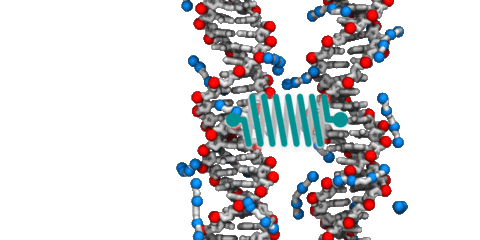Molecular mechanics of DNA processing
DNA is arguably the most celebrated molecule of life. Yet its physical properties are poorly understood and the role of these properties in processes of biological significance is unclear. This thrust of our research program uses computer modeling techniques to characterize physical properties of DNA and elucidate molecular processes that govern DNA replication and repair in bacteria and genome packaging and ejection in viruses.
